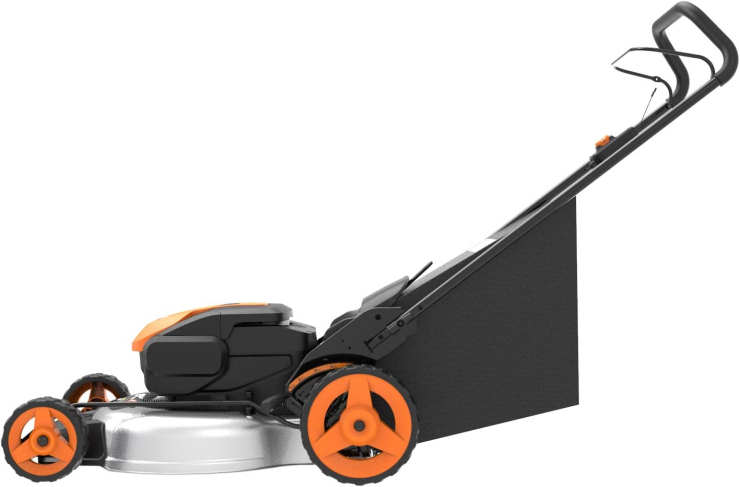How to Plant Dahlia Bulbs: A Step-by-Step Guide
Dahlias are a popular and colorful addition to any garden. These flowering plants are known for their vibrant blooms and come in a wide range of colors, shapes, and sizes. Planting dahlia bulbs is a simple and rewarding process that can be done by gardeners of all skill levels.
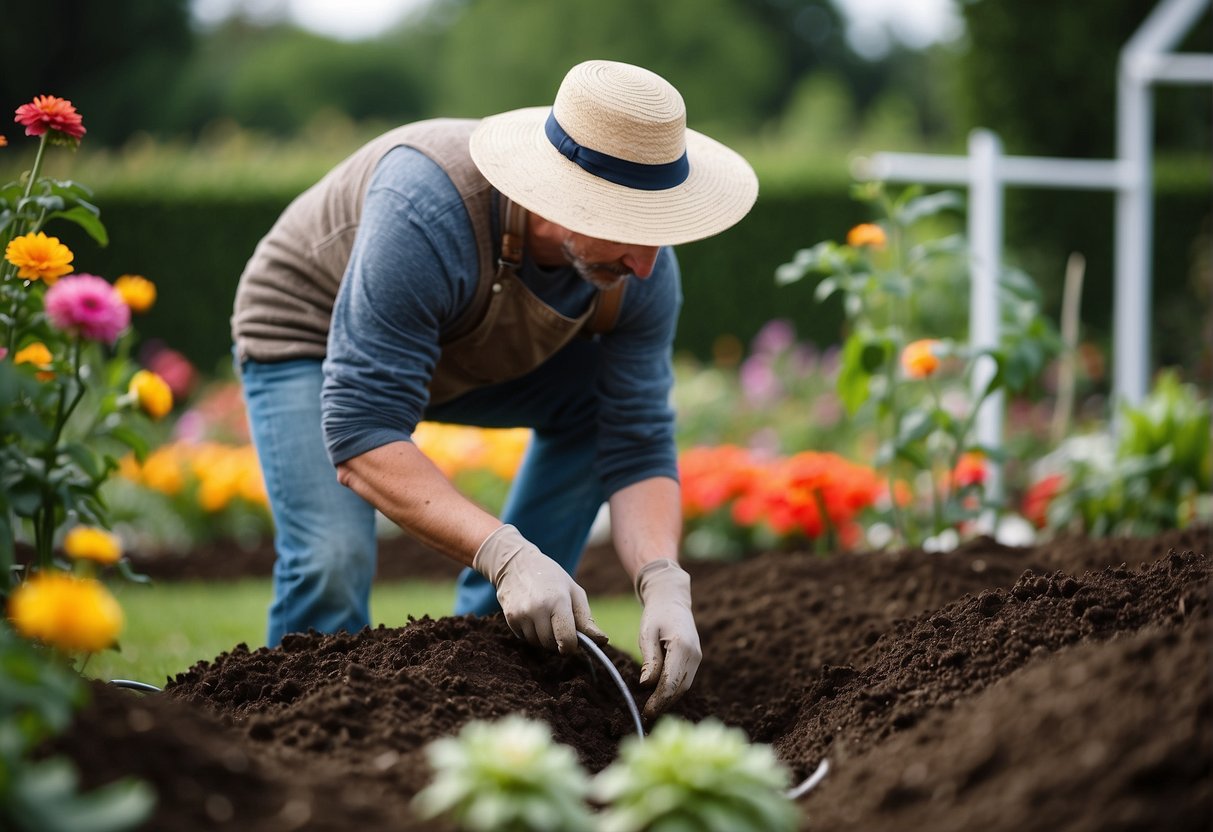
To begin planting dahlia bulbs, it is important to choose a location that receives full sun for at least six hours a day. Dahlias prefer well-draining soil, so it is important to amend the soil with compost or other organic matter before planting. The best time to plant dahlia bulbs is in the spring, after the risk of frost has passed.
Once you have selected a suitable location, dig a hole that is about six inches deep and wide enough to accommodate the bulb. Place the bulb in the hole with the pointed end facing up and cover it with soil. Water the newly planted bulb thoroughly and continue to water regularly, keeping the soil moist but not waterlogged. With proper care and attention, your dahlia bulbs will soon sprout and produce beautiful blooms.
Choosing the Right Dahlia Bulbs

When it comes to planting dahlias, choosing the right bulbs is crucial to ensure that your garden blooms with vibrant colors. This section will guide you through the process of selecting the best dahlia bulbs for your garden.
Understanding Dahlia Varieties
Before selecting dahlia bulbs, it is important to understand the different varieties available. There are over 42 different species of dahlias with thousands of cultivars. Dahlias are classified into different categories based on their flower shape and size, such as:
- Decorative dahlias
- Cactus dahlias
- Pompon dahlias
- Anemone-flowered dahlias
- Waterlily dahlias
- Collarette dahlias
Each variety has its unique characteristics, such as size, shape, and color. Understanding the different dahlia varieties can help you choose the right bulbs that will thrive in your garden.
Selecting Quality Tubers
When selecting dahlia bulbs, it is essential to choose quality tubers that will produce healthy plants. Here are some factors to consider:
- Eye: Look for bulbs with at least one visible eye, which is the small bump on the surface of the bulb. The eye is where the new growth will emerge from, so a bulb without an eye will not grow.
- Size: Choose bulbs that are firm and plump. Larger bulbs tend to produce larger plants and more flowers.
- Colors: Select bulbs that match the colors you want in your garden. Dahlia bulbs come in a wide range of colors, including red, yellow, pink, orange, and purple.
- Supplier: Purchase bulbs from a reputable supplier to ensure that you get quality bulbs that are disease-free.
By considering these factors, you can select the best dahlia bulbs that will produce healthy plants and colorful blooms.
Preparing the Planting Site
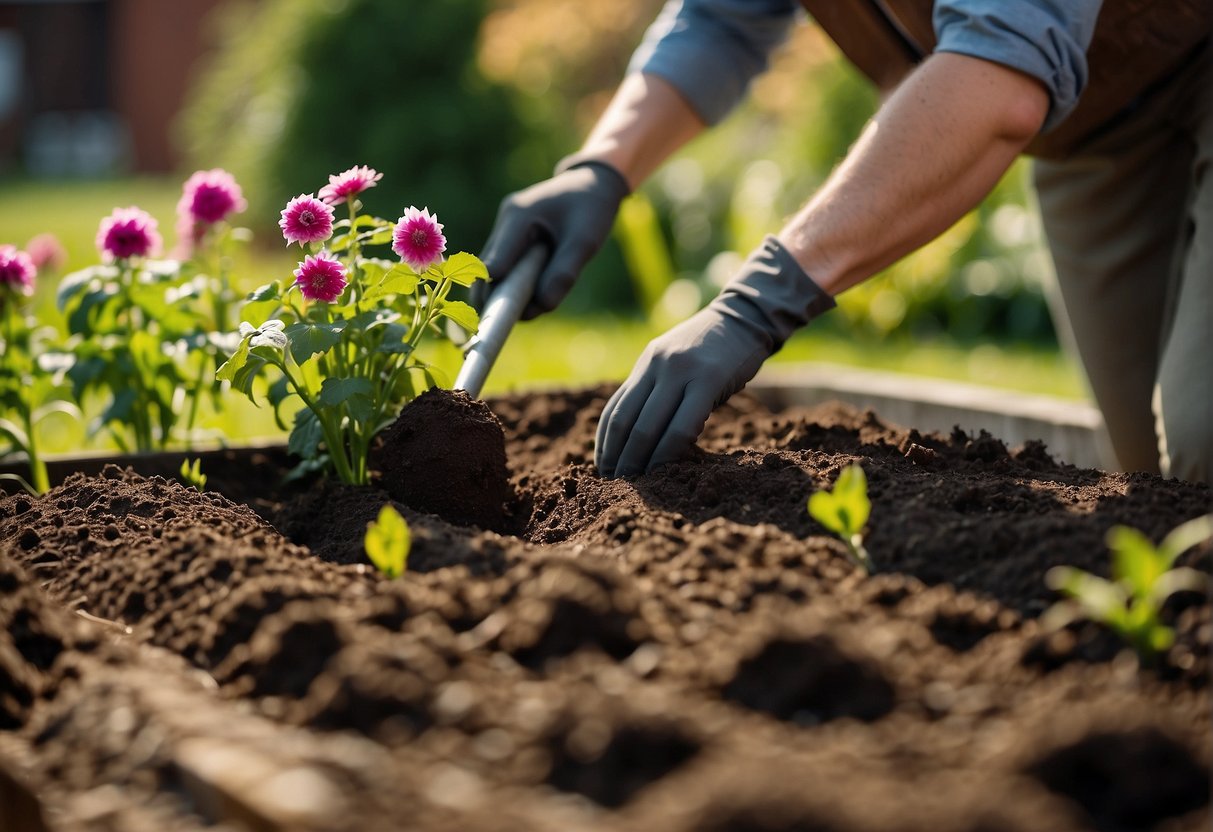
Soil Requirements
Before planting dahlia bulbs, it is important to ensure that the soil is well-draining and fertile. Dahlias prefer a pH range of 6.0 to 7.5. A soil test can be done to determine the pH and nutrient levels of the soil. If the pH is too low, lime can be added to raise it. If the pH is too high, sulfur can be added to lower it.
In addition to pH, the soil should be well-draining to prevent waterlogging, which can lead to root rot. Adding organic matter such as compost, peat moss or aged manure can help improve soil structure and drainage.
Location and Light
Dahlias thrive in full sun, so it is important to choose a location that receives at least six hours of direct sunlight per day. The site should also be sheltered from strong winds, as the tall stems of dahlia plants can be easily damaged.
When selecting a planting site, consider the height of the dahlia variety being planted. Taller varieties may require staking or support to prevent them from falling over.
In summary, preparing the planting site for dahlias involves ensuring that the soil is well-draining and fertile, with a pH range of 6.0 to 7.5. The location should receive at least six hours of direct sunlight per day and be sheltered from strong winds. Taller varieties may require staking or support.
Planting Dahlia Bulbs
Proper Timing
When it comes to planting dahlia bulbs, timing is everything. These bulbs should be planted in the ground after the threat of frost has passed, typically in the spring. Planting too early can result in damage or death of the bulbs due to freezing temperatures.
Planting Technique
To plant dahlia tubers, start by digging a hole that is about 6-8 inches deep. The hole should be wide enough to accommodate the tuber and allow for some room to grow.
Next, place the tuber in the hole with the eye facing up. The eye is the small, raised bump on the tuber that will eventually sprout into a stem. Cover the tuber with soil, making sure to leave about an inch of space between the soil surface and the top of the hole.
Water the newly planted tuber thoroughly, and continue to water regularly throughout the growing season. Dahlia plants prefer well-draining soil, so make sure the soil is not too wet or soggy.
In summary, planting dahlia bulbs requires proper timing and technique. Wait until after the threat of frost has passed in the spring, and plant the tubers in a hole that is 6-8 inches deep with the eye facing up. Water regularly and ensure the soil is well-draining for optimal growth.
Caring for Dahlias After Planting
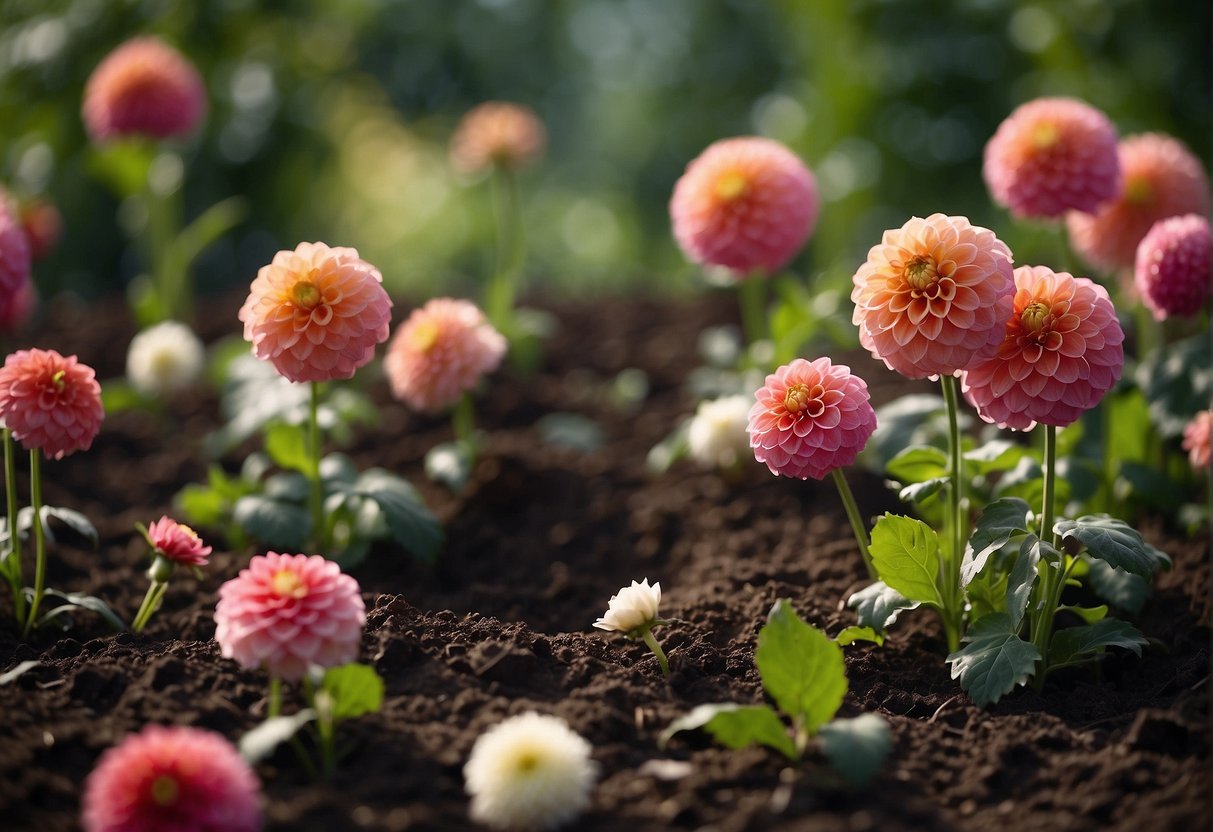
After planting dahlia bulbs, it is essential to care for them properly to ensure they grow healthy and strong. This section will cover two critical aspects of dahlia care after planting: watering and fertilization, and staking and support.
Watering and Fertilization
Watering and fertilizing are crucial for the growth and health of your dahlia plants. After planting, water the bulbs thoroughly to help them settle into the soil. Once the plants start growing, water them regularly, especially during hot and dry weather. Make sure to water the soil around the plant and not the leaves or flowers, as this can cause damage and disease.
Fertilizing your dahlias is also important to provide them with the necessary nutrients for healthy growth. Use a balanced fertilizer, such as a 10-10-10 or 20-20-20, once a month during the growing season. Avoid over-fertilizing, as this can lead to excessive foliage growth and fewer flowers.
Staking and Support
Dahlias can grow quite tall and heavy, so staking and support are necessary to prevent them from flopping over or breaking. Staking should be done early in the growing season to avoid damaging the roots. Use sturdy stakes, such as bamboo or metal, and place them about 6 inches away from the plant, driving them about 1 foot into the ground.
As the plant grows, tie it to the stake using soft ties, such as garden twine or Velcro tape. Tie the plant loosely to avoid damaging it and adjust the ties as needed. For larger dahlias, you may need to use additional stakes or a support cage to keep them upright.
By following these simple steps for caring for dahlias after planting, you can ensure healthy growth and beautiful blooms throughout the growing season.
Maintaining and Protecting Dahlia Plants
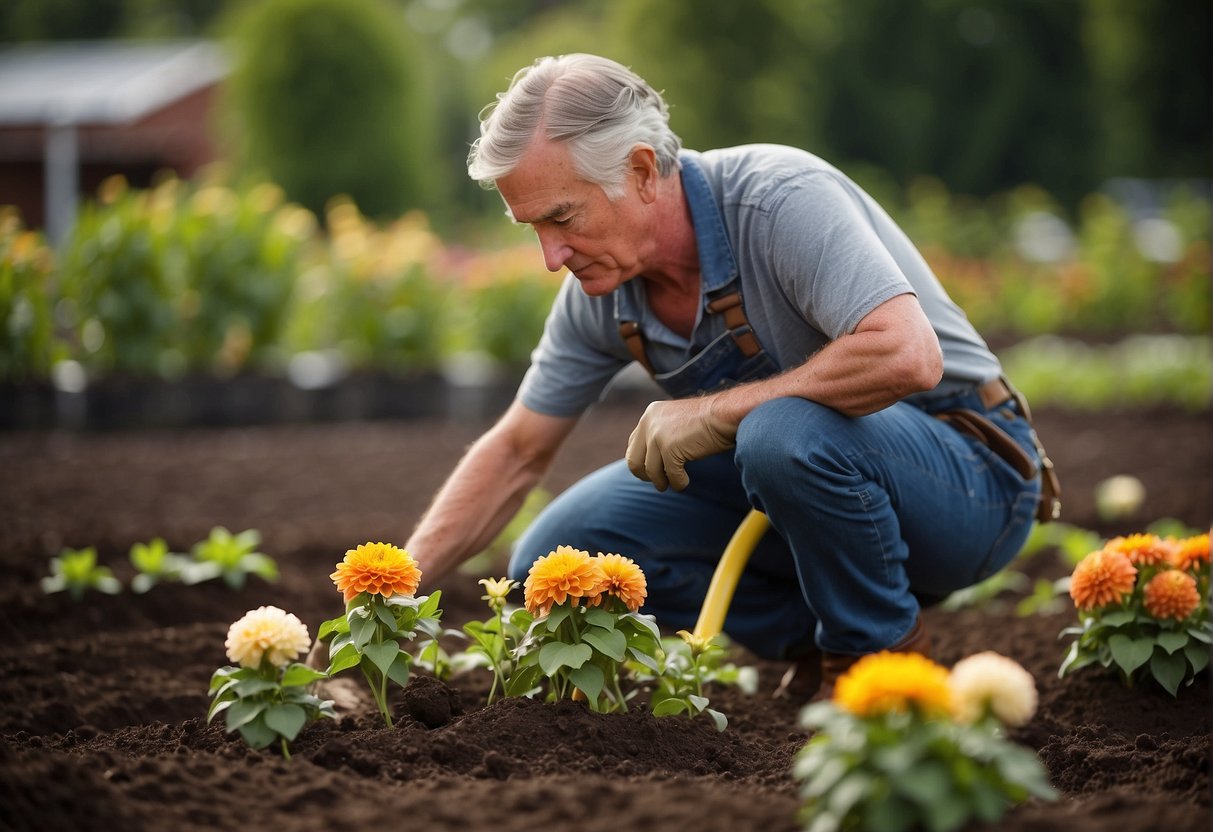
Pest and Disease Management
Dahlia plants are susceptible to a variety of pests and diseases, which can damage or even kill the plants. Here are some common pests and diseases that affect dahlia plants and how to manage them:
Aphids: These small insects can suck the sap from the leaves and stems of dahlia plants, causing them to wilt and die. To control aphids, spray the plants with a strong stream of water or use insecticidal soap.
Slugs and snails: These slimy creatures can eat holes in the leaves and flowers of dahlia plants. To control slugs and snails, place traps around the plants or use a slug and snail bait.
Powdery mildew: This fungal disease can cause a white, powdery coating to form on the leaves of dahlia plants. To control powdery mildew, remove infected leaves and spray the plants with a fungicide.
Seasonal Care
To ensure that dahlia plants bloom and thrive, it is important to provide them with the proper care throughout the growing season. Here are some tips for caring for dahlia plants:
Mulch: Apply a layer of mulch around the base of the plants to help retain moisture and control weeds.
Watering: Dahlia plants require regular watering, especially during hot, dry weather. Water the plants deeply once a week, or more often if the soil is dry.
Winter care: Dahlia plants are not hardy in all hardiness zones and may require special care during the winter months. In colder climates, the plants should be dug up and stored indoors until the spring. In warmer climates, the plants can be left in the ground but should be cut back to the ground after the first frost.
By following these tips for pest and disease management and seasonal care, gardeners can enjoy healthy, beautiful dahlia plants throughout the growing season.
Frequently Asked Questions

What is the ideal depth for planting dahlia tubers?
The ideal depth for planting dahlia tubers is around 4-6 inches. Planting them too shallow can cause the tubers to dry out, while planting them too deep can delay the emergence of shoots. It is important to ensure that the soil is well-draining and that there is enough space between the tubers to allow for proper growth.
Can dahlia tubers be planted in pots, and if so, how?
Yes, dahlia tubers can be planted in pots. It is recommended to use a pot that is at least 12 inches in diameter and 12 inches deep. Fill the pot with well-draining soil, leaving enough space at the top for watering. Plant the tubers 4-6 inches deep and water thoroughly. Place the pot in a location with full sun exposure and water regularly to keep the soil moist.
Is it necessary to soak dahlia tubers before planting, and what are the benefits?
Soaking dahlia tubers before planting is not necessary, but it can help to encourage growth and prevent rot. Soak the tubers in lukewarm water for 1-2 hours before planting. This can help to soften the tubers and encourage the growth of roots. Be sure to plant the tubers immediately after soaking to prevent them from drying out.
How can you determine the correct orientation for planting a dahlia tuber?
The correct orientation for planting a dahlia tuber is with the eye facing upwards. The eye is the small bump on the tuber where the stem will emerge. Planting the tuber upside down can delay or prevent the emergence of shoots. If the tuber does not have an obvious eye, plant it horizontally and let the shoots find their way upwards.
What is the best time of year to plant dahlia tubers?
The best time of year to plant dahlia tubers is in the spring, after the danger of frost has passed. In warmer climates, tubers can be planted in the fall for early spring blooms. It is important to wait until the soil has warmed up to at least 60°F before planting to ensure proper growth.
Is it possible to overwinter dahlias in the ground, and what are the precautions?
It is possible to overwinter dahlias in the ground, but precautions must be taken to prevent damage from freezing temperatures. In colder climates, dahlias should be dug up and stored in a cool, dry place for the winter. If leaving them in the ground, cover the area with a thick layer of mulch to protect the tubers from freezing. Be sure to remove the mulch in the spring to allow for new growth.


